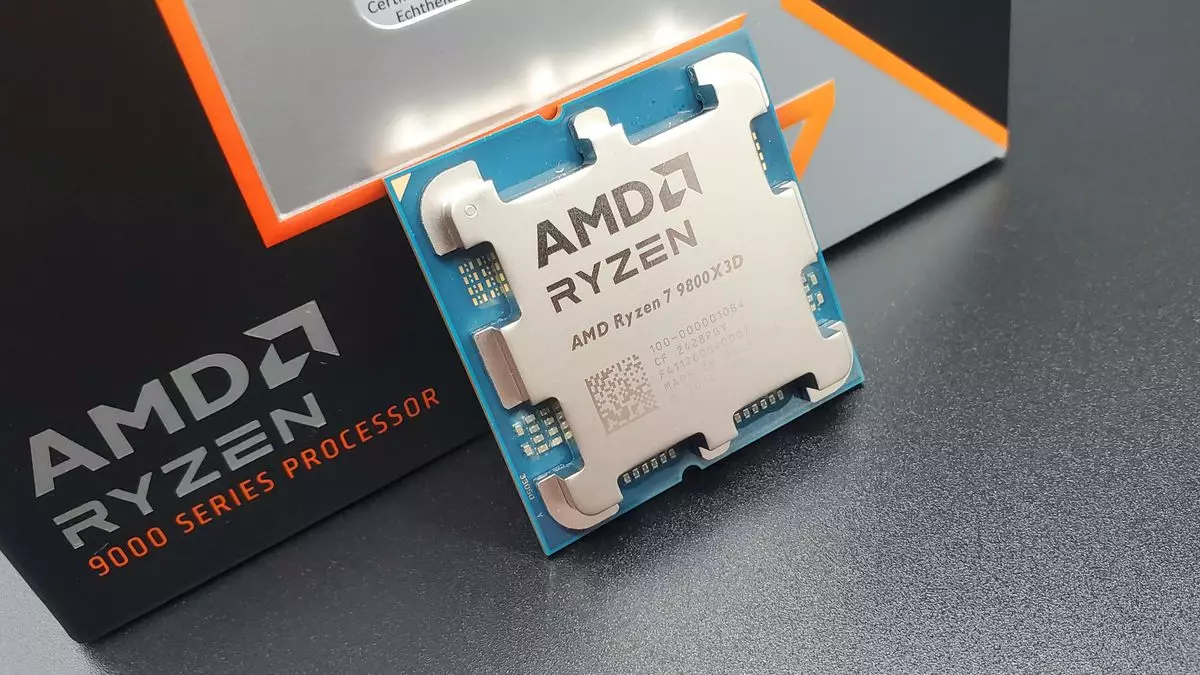The world of computing technology has lately been dominated by excitement—occasionally verging on hysteria—regarding next-generation graphics cards from Nvidia and the anticipated releases from AMD. However, amidst this frenzy, the crucial updates from the CPU market deserve equal spotlight. In recent months, both Intel and AMD have introduced new processors that are set to shape the future of computing. While Nvidia captures the headlines, both companies are locked in a strategic battle that has ramifications for enthusiasts and casual users alike.
AMD’s introduction of the Ryzen 9000 series, featuring the Zen 5 architecture, has been met with considerable enthusiasm. Recent figures from an earnings call hosted by AMD’s CEO, Dr. Lisa Su, reveal that the company’s CPUs experienced a “record sell-out” during the holiday season. The AMD Ryzen 7 9800X3D, in particular, has become a highly sought-after product, leading to extreme scarcity in the market. The inability for consumers to find reasonably priced units is indicative of the demand that AMD’s products are currently commanding.
However, it is crucial to approach these sales figures with a discerning eye. High sell-outs can be driven by both strong demand and the competing variable of limited supply. Historically underproduction has plagued many tech releases; a stark reminder being Nvidia’s RTX 5080 and RTX 5090 graphics cards, which many consider a “paper launch”—only an announcement with little tangible product behind it. AMD’s 9000 series doesn’t seem to fall into that category, but the scarcity does raise questions about their manufacturing and distribution capabilities in tandem with their success.
While AMD’s CPU performance appears strong, one must consider the competitive environment from Intel, particularly the release of its Core Ultra 200S ‘Arrow Lake’ processors. Users and critics alike noted that the Arrow Lake line didn’t significantly elevate Intel’s offerings, leading to skepticism regarding its competitiveness against AMD’s Ryzen series. The Intel CPUs have been plagued with stability issues in earlier generations, which has further undermined their position in the marketplace.
When you factor in AMD’s strategic positioning, it becomes evident that external circumstances are also influencing their success. With Intel failing to capture the market’s attention with enticing features or performance, it’s hardly surprising that AMD has made robust gains. The trends suggest that AMD is reaping the benefits of Intel’s missteps, and if Intel’s products continue to falter, consumers may increasingly turn to AMD.
The Mobile Segment and Future Potential
While the desktop CPU market is experiencing significant shifts, it’s essential to analyze the growing mobile segment as well. AMD has made great strides with its AI 300 ‘Strix Point’ processors that are not just confined to traditional laptops but are also compromising handheld gaming devices. Notably, the incorporation of these processors into products like the OneXPlayer OneXFly F1 Pro is a strong indicator of AMD’s intentions to expand beyond typical gaming and into versatile computing solutions.
Intel is not without its own endeavors in the mobile market. The Core Ultra 200V ‘Lunar Lake’ CPUs possess commendable efficiency ratings and have found their way into devices like the MSI Claw 8 AI+. However, despite their efficiency, these mobile processors face challenges against the graphical capabilities of the Strix Point lineup. This indicates a landscape where both companies are not only competing on performance but also on usability and efficiency, diversifying their respective portfolios.
As the first quarter of 2024 unfolds, Dr. Su anticipates “seasonality” might impact sales, although she indicates that the desktop segment could outperform relative expectations. The high demand for the Ryzen 7 9800X3D highlights the urgent need for AMD to bolster supply levels, particularly as consumers grow increasingly impatient with “out of stock” notifications. The future for AMD and Intel appears dynamic, with each company aiming to capture consumer interest as developments unfold.
While AMD may currently have the upper hand, one must keep a keen eye on Intel’s actions. As both companies strive for innovation and market share, the exciting race for supremacy in the CPU sector will have lasting impacts on gaming and computing as a whole. With each new chipset release, we inch closer to groundbreaking advancements, making the forthcoming months a captivating time for tech enthusiasts.

